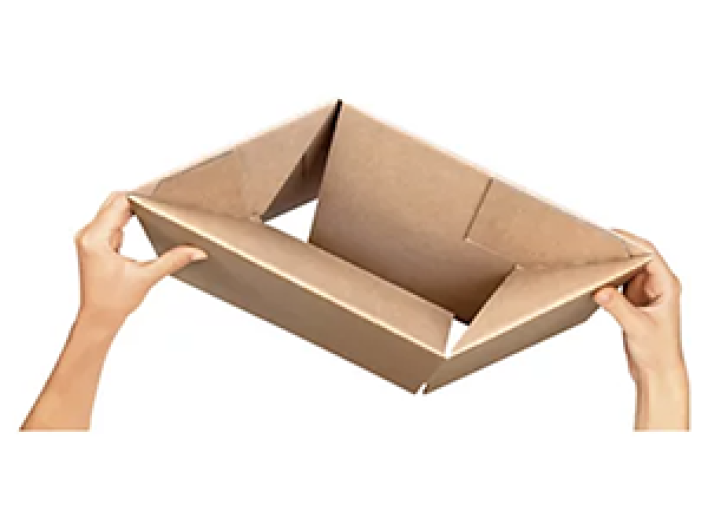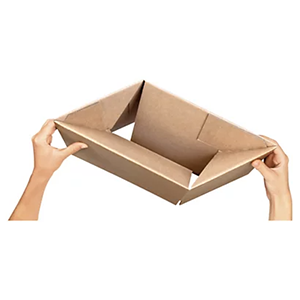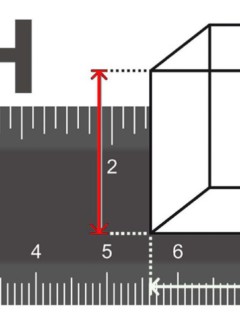Since last week, shops have been allowed to reopen. At first gradually and under very strict conditions, which often differ from federal state to federal state and in practice are also interpreted and implemented differently from shop to shop.
There is still a lot of uncertainty among consumers as well as shop operators. The fact is: Corona will be with us for months, maybe even years. As a retailer, therefore, some measures must be taken now – also in the long term – to protect your own health as well as that of your employees and customers. Retail after Lockdown – an overview:
Which shops are allowed to reopen?
Since 20 April, car dealers, bicycle dealers and bookshops have been allowed to reopen regardless of their sales area. In addition, those shops with a sales area of up to 800 square metres are allowed to reopen. The uneven handling from federal state to federal state as to whether larger shops are also allowed to open by demarcating and reducing the shop area to a maximum of 800m² has now been resolved by the administrative court in Hamburg by summary proceedings: opening is now also allowed for larger shops as long as they limit their sales area to a maximum of 800m², taking into account hygiene regulations. Bars and discotheques, restaurants, beauty salons and fitness studios, among others, are still excluded. Who is allowed to open, who is not?
Strict hygiene requirements for all who open
The implementation of hygiene requirements must be ensured in all cases. The top priority is to protect oneself as well as possible from infection. The concrete implementation of the regulations varies in the respective federal states. Click here for the websites of the federal states. In the meantime, the obligation to wear a mask has been adopted uniformly and nationwide, but its implementation varies slightly from one federal state to the next.
What are the requirements?
A prerequisite for reopening is compliance with the federal government’soccupational health and safety standard . In practice, this means:
- Employers have a duty of care and protection towards their employees under their employment contracts. He must therefore ensure that the risks of illness and health hazards in the workplace are kept as low as possible. These basic obligations of the employer result from §3 ArbSchG. Depending on the type of business - for example, in a business with a lot of customer contact - the duty to protect may result in a specific obligation to provide disinfectants, for example.
- it must be possible to maintain a minimum distance of 1.5 m between customers; this also applies to employees. If the minimum distance between workplaces cannot be maintained, the number of employees working at the same time must be reduced. This is also relevant for breaks or the beginning and end of work, these must be organised in such a way that the safety distance between employees, for example in break rooms or at smoking points, is always maintained.
- In the case of access doors that do not open without contact, it is advisable to leave them open or to disinfect them continuously.
- From 27 April onwards, mouth/nose coverings must be worn throughout the country, these must be provided for staff as PPE, customers are responsible for their own mouth/nose protection
- Sufficient disinfectant must be provided for staff.
- The prevention and occupational safety measures must be communicated comprehensively to the employees. The protective measures must be explained to everyone and instructions must be made comprehensible to everyone through floor markings, notices and information signs. Attention must also be drawn to compliance with personal and organisational hygiene rules (distance requirement, "cough and sneeze etiquette", hand hygiene, PPE). The information provided by the Federal Centre for Health Education is also helpful for instructions. Here, for example, there is also information material that can be hung up or distributed in the company
Concrete measures in business
- Floor markings in front of cash registers, reception or information desks, in waiting areas can be used to maintain the minimum distance of 1.5 m.
- Install separators or spit guards at all points of contact between staff and customers, for example at checkouts or sales counters
- Introduce controls to ensure the maximum number of customers and to guarantee compliance with the distance rules (implemented in practice e.g. by issuing access cards which are handed back and disinfected when leaving the shop)
- Where possible, separation and marking of the movement areas of staff and customers
- Offer a separate goods issue for at-risk groups
- offer and give preference to contactless payment methods
- Inform the customer:
- Cashless payment means security for all
- Keeping a distance from others and retail staff protects everyone
- Plan shopping for several days to reduce contact with other people
- Exercise house authority over people who do not follow the rules
- equalise staff contact through rolling schedules
- where possible, extend opening hours to reduce frequency
- if possible, schedule activities without customer contact (e.g. stocking shelves, storage, scheduling, etc.) outside business hours
- train employees regularly on hygiene issues and rules of conduct
- disinfect all surfaces that are frequently touched (handles, hand-held terminals, keyboards, touch screens, fittings, toilets) regularly and at short intervals
- Provide and keep in stock sufficient protective material (e.g. mouth-nose covering, gloves, disinfectant, etc.)
- Post information about the hygiene and protective measures to be observed in a clearly visible place for employees, customers and suppliers, possibly also in common foreign languages.
- Make mobile solutions available to staff and customers for frequent disinfection
- Provide disposable/protective gloves for all employees who come into skin contact with customers or for all employees who come into contact with the same surfaces as customers or other employees (e.g. documents, operating keyboards, touch screens, etc.).
- Provide gloves for customers in case of "touch-affine" assortments (fruit, clothing, etc.).
- Ventilate rooms regularly
- Where possible, reduce the number of parking spaces on busy days (e.g. with traffic cones, barrier posts and barrier tape) to regulate the number of customers.
- Where possible, offer online processing of business transactions, if necessary with shipping options
Retailers take stock after a few days
Retailers all over Germany are reporting relatively modest visitor numbers, the feared (but also hoped for) rush of customers has failed to materialise. The fear of contagion was too great for some, the shopping experience too “unrelaxed” for others: There are several reasons for the still restrained demand. Retailers are reacting with a mixture of frustration and relief. Hardly anyone expected that the missing sales from the past weeks would simply be “made up for”. And yet the situation is frustrating for many. Compared to normal times, turnover is only 30 to 50 percent. After all, most people make specific purchases to support the local retail trade. And then go home again quickly. Spontaneous and impulse purchases are not made.
Learning to deal with the situation
Because we are still a long way from a relaxed and carefree shopping experience. To limit the number of customers within the shop area, for example, access cards are issued at the entrance. These are returned and disinfected when leaving the shop. If no card is available at the moment, the customer has to wait outside the door. Shopping together, possibly even with a child or children, is thus clearly not relaxed. The uncertainty is also too great: What am I allowed to do? Where am I allowed to walk along, what can be touched? Many things are questioned and sometimes passionately discussed with the staff or security personnel. The new rules have to be learned first. Customers and retailers alike are inexperienced here. And many a retailer is therefore relieved about the moderate flow of customers. This way, the requirements and regulations can be complied with and there is no threat of fines or, in the worst case, even the closure of the shop again.
Gabriel Felbermayr, President of the Kiel Institute for the World Economy (IfW Kiel), is also relieved:
And in the medium and long term?
Experts see an uphill battle. Because the shop closures do not just affect the summer collection, on which the retail trade will largely be “stuck”. According to t3n, for example, Christmas business as we know it is unthinkable this year. Many don’t feel entirely comfortable in the shops, the fear of contagion is a constant companion. How long the measures currently in place, such as access restrictions, walkway markings and the like, will be necessary, no one can foresee today. Paradoxically, it will also depend on how consistently we as customers accept and go along with these restrictions. A cycle: The rather “sluggish” sales in the first few days after opening can therefore also be a good sign – and hope for the retail trade.
Sources and for further reading:
https://www.baua.de/DE/Themen/Arbeitsgestaltung-im-Betrieb/Biostoffe/Coronavirus.html
https://www.dihk.de/de/aktuelles-und-presse/coronavirus/faq-19594
https://www.bundesregierung.de/breg-de/themen/coronavirus/corona-massnahmen-1734724
https://www.bundesregierung.de/breg-de/themen/coronavirus/corona-bundeslaender-1745198
Click here for the BMAS occupational health and safety recommendations.
https://www.ihk-muenchen.de/corona-unternehmen-hygiene/
https://www.bghw.de/die-bghw/faq/faqs-rund-um-corona/#collapse3

















